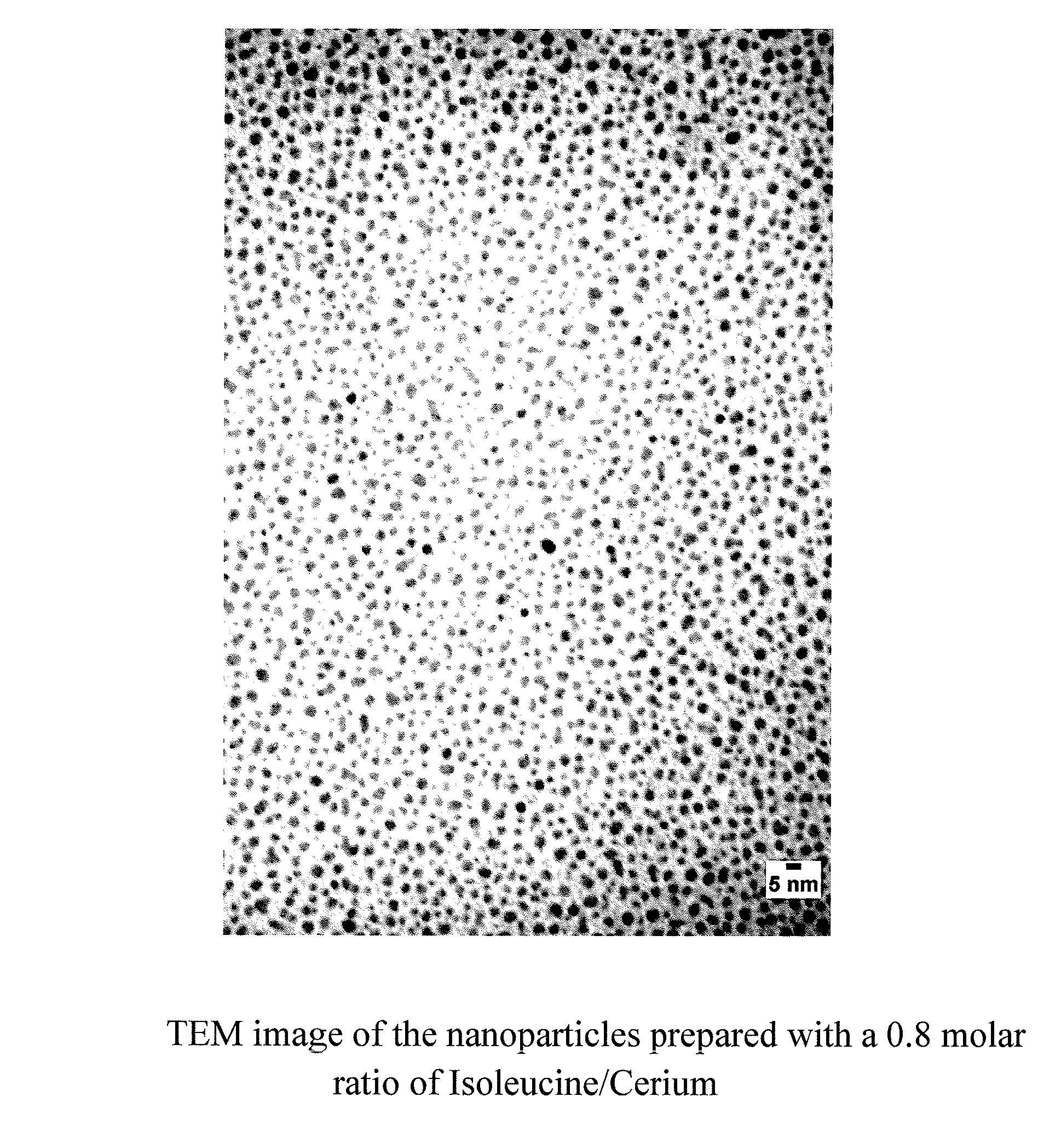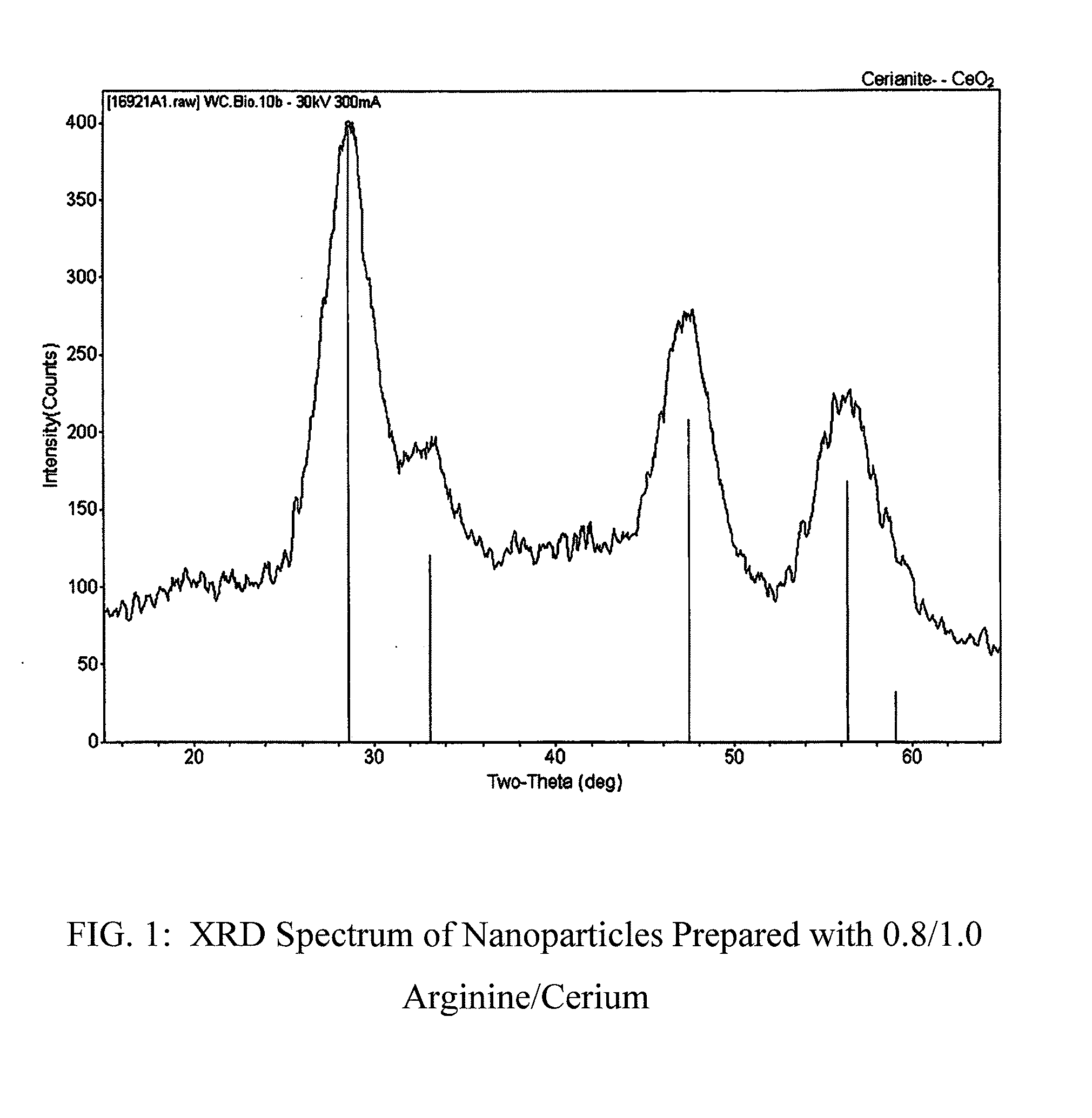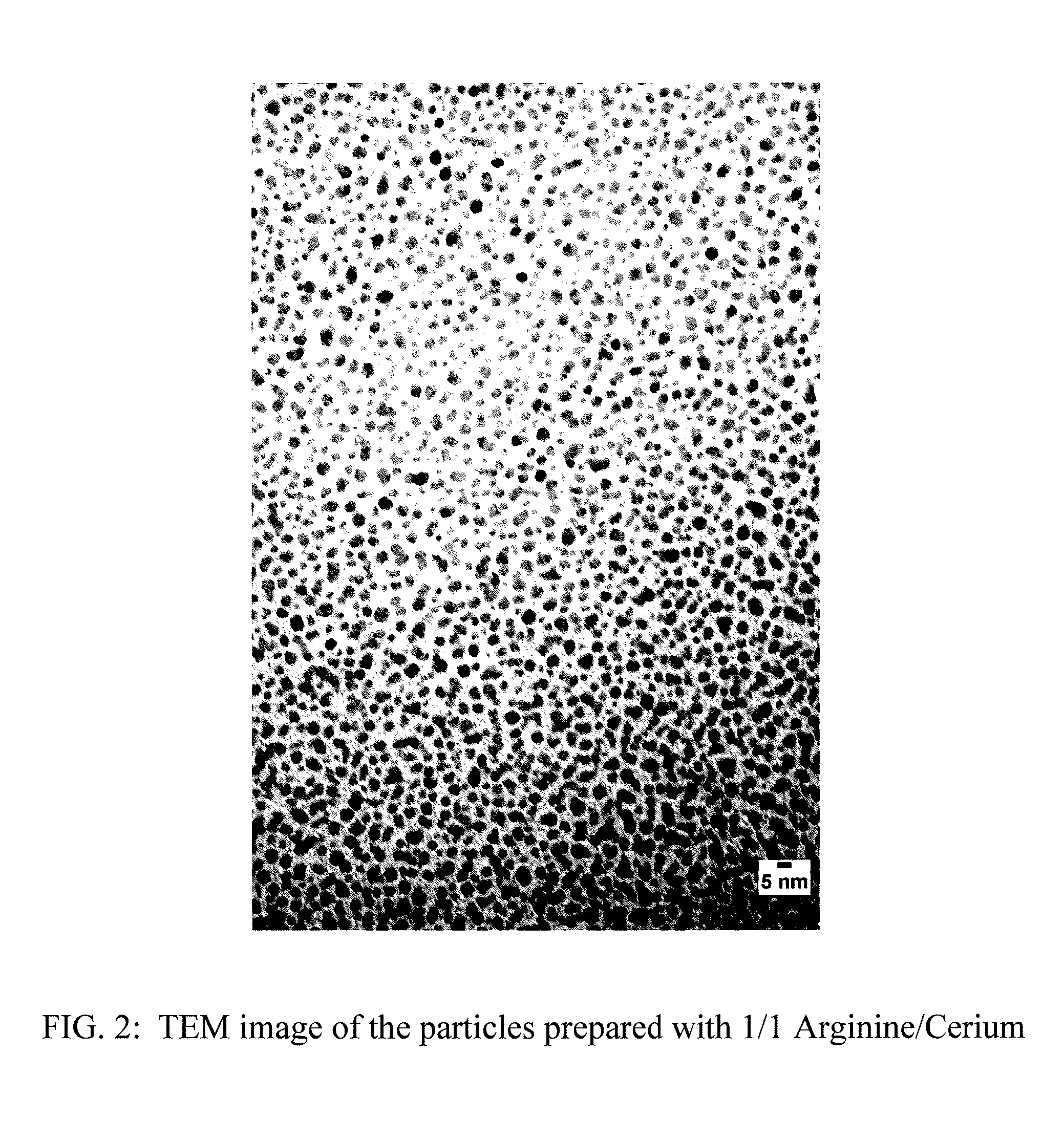Nanoparticles of cerium and amino acids
a technology of cerium and amino acids, applied in the field of nanoparticles, can solve the problems of reduced efficacy and deliverability, toxic response, and higher than desired toxicity to mammalian cells
- Summary
- Abstract
- Description
- Claims
- Application Information
AI Technical Summary
Benefits of technology
Problems solved by technology
Method used
Image
Examples
example 1a
WC-Bio-9a: 0.1 DL-Arginine / Cerium
[0108]Into a 600 ml glass beaker containing a magnetic stir bar was introduced 500 ml of high purity (HP) water. A 0.415 gm quantity of DL-arginine was dissolved in this volume, forming an alkaline solution. A 10.0 gm quantity of Ce(NO3)3′6(H2O) was added, dissolved with stirring, resulting in a solution pH of about pH 6. The molar ratio of DL-arginine to cerium ion was 0.1. Base in the form of ammonium hydroxide was added. Then a 10 ml solution containing 1.20 gm of 50% H2O2 (0.75 molar ratio of H2O2 to cerium ion) was added slowly to the cerium and arginine solution mixture. The reaction product was then heated to 40° C. for 1 hour. After cooling, the final product dispersion displayed a high degree of Tyndall scattering when illuminated with a low intensity LASER beam, indicating it contained well-dispersed colloidal particles. Particle size analysis by dynamic light scattering indicated a hydrodynamic diameter of 93.1 nm with a polydispersity of ...
example 1b
WC-Bio-10a: 0.4 DL-Arginine / Cerium
[0109]Into a 600 ml glass beaker with a magnetic stir bar was introduced 500 ml of high purity (HP) water. A 1.605 gm quantity of DL-arginine was dissolved in this volume and the solution was heated to about 40° C., thereby forming an alkaline solution. An aqueous solution containing a 10.0 gm quantity of Ce(NO3)3·6(H2O) was added under high shear mixing conditions provided by a Silverson L4RT high shear mixer operated at about 5000 RPM, resulting in a pale orange colored solution of about pH 7.9. The molar ratio of DL-arginine to cerium ion was 0.4. Then a 10 ml solution containing 1.2 gm of 50% H2O2 (0.75 molar ratio of H2O2 to cerium ion) was added slowly to the cerium and arginine solution mixture, which lowered the pH to about 3.4, and formed a turbid dark brown / orange suspension. The pH was further adjusted to about 2 by the addition of 1N HNO3, thereby forming a clear orange liquid. The reaction product was then stirred with a magnetic stir b...
example 1c
WC-Bio-9b: 0.5 DL-Arginine / Cerium
[0112]Into a 600 ml glass beaker containing a magnetic stir bar was introduced 500 ml of high purity (HP) water. A 2.006 gm quantity of DL-arginine was dissolved in this volume and the solution was heated to about 40° C., forming an alkaline solution. A 10.0 gm quantity of Ce(NO3)3′6(H2O) was added, dissolved with stirring, resulting in a solution pH of about pH 6. The molar ratio of DL-arginine to cerium ion was 0.5. Then a 10 ml solution containing 1.20 gm of 50% H2O2 (0.75 molar ratio of H2O2 to cerium ion) was added slowly to the cerium and arginine solution mixture, which lowered the pH to about 4, and formed a turbid white suspension. The pH was further adjusted to about 3 by the addition of 1N HNO3, thereby forming a clear suspension. The reaction product was then held at 40° C. for 1 hour. After cooling, the final product dispersion was a clear liquid that displayed a high degree of Tyndall scattering when illuminated with a low intensity LAS...
PUM
| Property | Measurement | Unit |
|---|---|---|
| Temperature | aaaaa | aaaaa |
| Temperature | aaaaa | aaaaa |
| Zeta potential | aaaaa | aaaaa |
Abstract
Description
Claims
Application Information
 Login to View More
Login to View More - R&D
- Intellectual Property
- Life Sciences
- Materials
- Tech Scout
- Unparalleled Data Quality
- Higher Quality Content
- 60% Fewer Hallucinations
Browse by: Latest US Patents, China's latest patents, Technical Efficacy Thesaurus, Application Domain, Technology Topic, Popular Technical Reports.
© 2025 PatSnap. All rights reserved.Legal|Privacy policy|Modern Slavery Act Transparency Statement|Sitemap|About US| Contact US: help@patsnap.com



